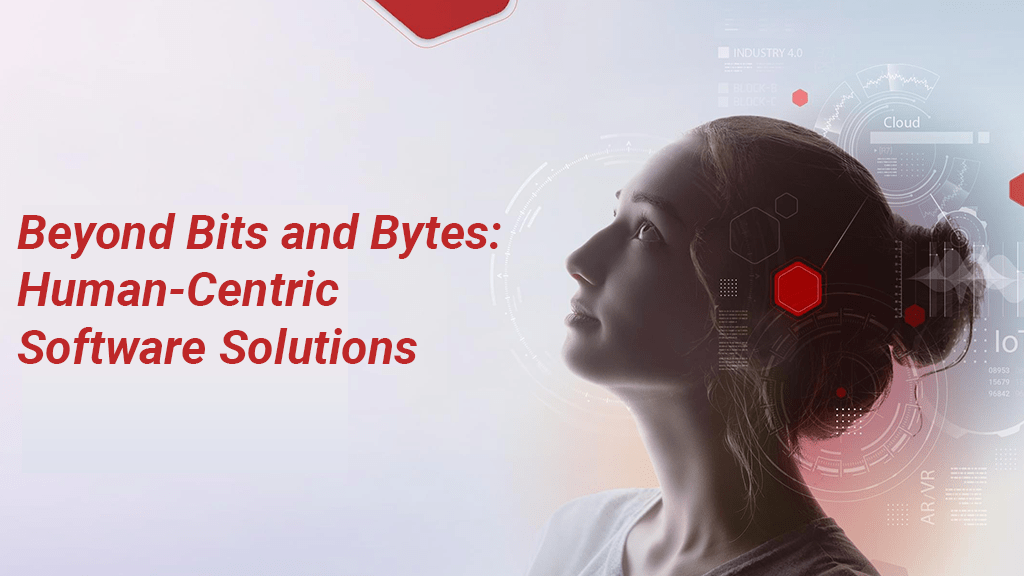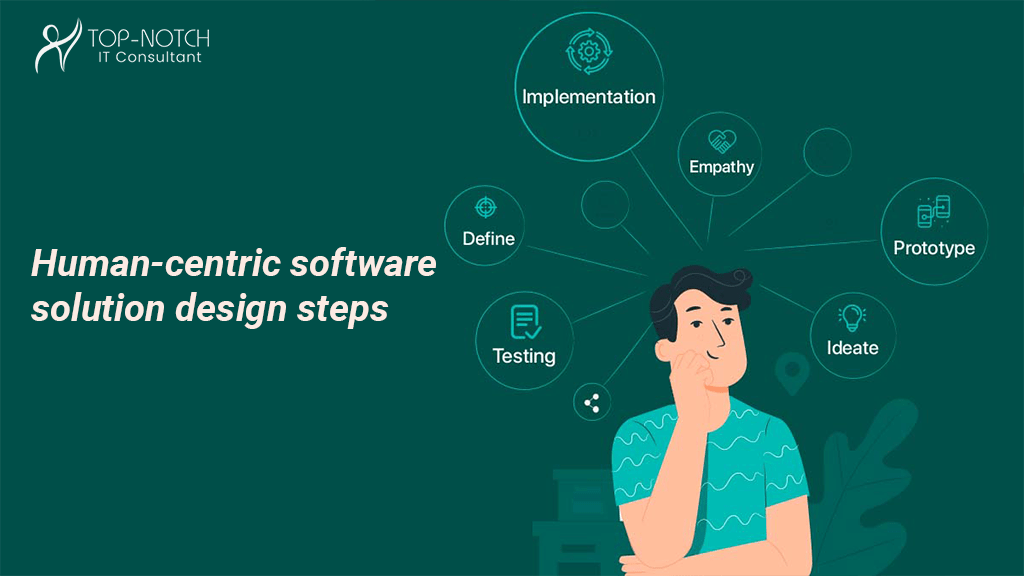Beyond Bits and Bytes: Human-Centric Software Solutions

Digital technologies are deeply embedded all over our day-to-day routines. The merging of cyber and physical environments has caused end users to select their technology depending on some of the non-functional metrics such as the feel, emotions, and complete satisfaction. Also, businesses are mainly driven by digital solutions. Business functioning depends on constant interaction between software solutions and humans. In addition, the consumer journey, right from shopping to buying different services to installation and getting engaged with them, is not possible without the use of the software.
That being said, an interesting question arises, what exactly do user centric software solutions do?Human-centric software solutions are more engaging, influential, and highly fulfilling experiences for the end users. In simple words, these intuitive software designs offer the best user experience. So, let’s know what makes a good user experience. Here are the following four important aspects that are the important determinants of end-user experience.
- Good functionality: The main features, abilities, user interface as well as workflows that are available for the execution of the tasks and understanding the required outcome. The emphasis is on work that is guaranteed by the software service and the ability of the software system to implement this task with safety and reliability.
- User experience or UX: The usability, ease of access, aesthetics, commitment, and feedback that a user experiences on interaction with the software. This involves insubstantial metrics like emotional and visual experiences from the perspective of an end user.
- Exhibiting user experience: By properly considering user expectations, predicting user actions, and utilizing this predicted data for the deliverance of customized end-user services. Such a model is created depending on the user data, which might correspond to a diversified user base. The main aim of developing such a model is to perfectly generalize and predict user expectations that belong to various demographics.
- Service dependence: It often involves the availability and consistency of the software service. Availability is the time for which the software product remains functional under normal situations. Reliability is the probability of the system staying functional in the available time, which also includes the disturbances of the underlying systems.
Benefits of human-centric software solutions
The whole designing process of human-centric software solutions has several benefits. One of the main benefits is that it enhances user experience which has been discussed. Other benefits include increased effectiveness and productivity. Software products can be designed for the automation of repeating tasks, streamlining processes, and decreasing the time and effort needed for the completion of tasks after properly understanding the requirements of the user.It can also play an important role in enhancing innovation and competition.Customized software solutions can be designed to offer new and unique features that offer a competitive benefit by focusing on user’s requirements.
Here are some of the other benefits of human-centric software solutions:
- Enhances user satisfaction: End user satisfaction is one of the major benefits of human-centric software. Needs, choices, and issue points are taken into consideration. Users have a major role in the design process of the software, and they are not made to the audience. Because of this, the final software solution is a solution that meets all their expectations and is very simple to use. This has the potential to enhance user satisfaction and loyalty.
- Cost deflation: Human-centric software solutions also help in decreasing the cost of software development. It is easy to develop a product that meets the user’s requirements and choices if they are recognized early in the process of designing. This means there is less requirement for expensive redesigns or iterations, which are time-consuming and costly.
- Enhances usability: It is one of the major considerations in the software solution designing process. Human-centric software solutions make sure that the solution is simple to use and intuitive. This encourages new users to reduce the learning curve and make fewer errors. Enhanced usability also lessens distress and gives a boost to user satisfaction.

Human-centric software solution design steps
The success of any software solution relies on a flawless design structure that focuses mainly on user requirements. Human-centric software solution designing needs intuitive software designs that mainly involve a close association between the end users, stakeholders,, and developers for creating products that meet the requirements and users’ expectations.
Here are the steps involved in designing user software solutions
- Measuring the user needs: The main step is a proper understanding of the user’s needs. This step mainly involves user research and a survey of the user data. User research can be done with the help of surveys, observations, interviews, etc. and it assists in gaining insights about the requirements, limitations, and goals the end user has for any software.
- Creation of the persona: After the research phase, the next is making use of the insights for creating personas. These are all fictional characters that represent various kinds of users. Personas help in understanding the requirements of the users, their motivations, and behaviors and serve as a reference for any designer and developer all through the process of development. This becomes important for the developers to ideate and visualize the requirements of the client.
- Ideation and prototyping: The third step is ideation and prototyping. Ideation includes the generation of several usable solutions for the resolution of user issues. This phase helps in scrutinizing ideas for filtering them down for the selection of the best ones. Prototyping is the development of a visual representation of any product for testing its design and operation. Prototyping helps you in the collection of input from the users, designers, and stakeholders and makes all modifications for planning before completion.
- Testing and refining the product: For validating the design and operation of the designed digital solution, testing and refining the final product is very important. User testing is done by survey, testing of the usability, and focus groups. The results of the user tests are then utilized for fine-tuning the whole product and making all required changes before releasing it. This can be iterative and includes the active participation of every person in refining the end product that will finally meet all customer needs.
Conclusion
To conclude, human-centric software solutions are customized software solutions that are essential components of software development. It assists in the creation of intuitive and user-friendly software products and meets all specific requirements of various groups other than focusing on their requirements, limitations, and wants. User-centric software solutions demand strong cooperation among the designers, stakeholders as well as developers. Experts at any good software development company make use of user-centric software designs in their services to help you in overcoming all challenges.


The Role of QA in AI-Driven Software Development: Ensuring Accuracy and Reliability
February 19, 2025 Read More
Understanding the Environmental Impact of Cloud Computing: Strategies for Sustainable IT
February 12, 2025 Read More
